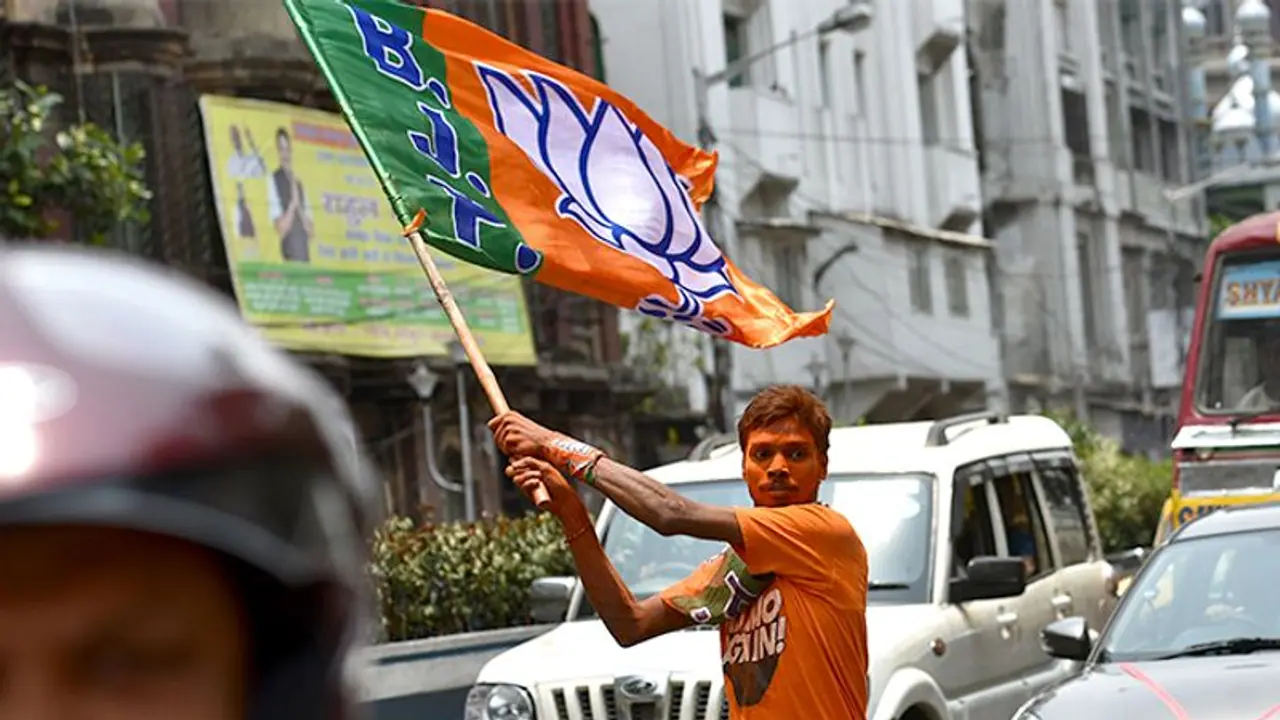The spectacular result on May 23, 2019 proves just one point that BJP sensed that disgruntlement way back in 2017 but TMC and left thought it to be a "hype". The TMC that got 34 seats out of 42 in 2014 ended up winning just 22 seats as BJP rose from a mere two seats to a massive 18
New Delhi: It was July 2017 when I was in Basirhat, 70 km from Kolkata covering the Baduria riot. It started after an extremely derogatory Facebook post by a local teen on Prophet Mohammed went viral. He was apprehended immediately, but that didn't calm things down. Cars were torched, shops belonging to the majority community were burnt down, and temples were desecrated. When I went on the ground, I was mobbed by a group of aggrieved victims complaining their plight doesn't make it's way to newspapers and shouting "Jai Shri Ram".
The spectacular result on May 23, 2019 proves just one point that BJP sensed that disgruntlement way back in 2017 but TMC and left thought it to be a "hype". The TMC that got 34 seats out of 42 in 2014 ended up having just 22 seats as BJP rose from a mere two seats to a massive 18.
1. Appeasement led to polarisation
The argument that many put forward is that if appeasement politics is responsible for the saffron wave in the state, then why did it not happen during the left regime which witnessed similar appeasement politics? The answer would be two-fold. One, the BJP of Advani and Rajnath Singh was not even a fraction aggressive as the BJP under Amit Shah that wants to get every possible pie in the electoral map of India. Two, Shyama Prasad Research Institute Director Dr Anirban Ganguly said, "The level of appeasement under left was not as blatant as it is under Mamata-led TMC. People were very disgruntled when she offered monthly stipends for Imams." This reached a tipping point and went against her.

2. The Left cadre base shifted and how
The Communist Party of India (Marxist) vote shares plummeted from 30% in 2014 to 6% in 2019. And the primary beneficiary has been the BJP. The question that arises is how can someone out to fight the "fascist communal forces" join a party whose ideology they so vehemently opposed. The answer is simple. For the cadres on the ground, at the anchal level or block level, the nuance of ideology doesn't matter as much as opposing TMC, their main contender. And in pursuit of that many CPI(M) cadre were allegedly beaten, forced to flee their villages (they are known as 'ghor chhara' in Bengali) and even killed. The CPI(M) leaders couldn't protect them. Many languished in jail for months without bail.
In BJP, they found a party that can fight for its cadre, protect them and even bail them out from jail. When 32-year-old Dulal Kumar, BJP's OBC Morcha member was found hanging from an electric transformer, BJP president Amit Shah himself tweeted, "Distressed to know about yet another killing of BJP karyakarta Dulal Kumar in Balrampur, West Bengal. This continued brutality and violence in the land of West Bengal is shameful and inhuman". For many such cases, PIL was filed by BJP in the Supreme Court. This made left cadre switch en-masse to BJP.

3. Bengali, also a Hindu
If anyone has been to West Bengal, they must have witnessed an accommodative spirit of the state where the only identity that binds them is Bengali-ness. It's not just the language but also their love for food, excitement to find a reason to celebrate (There's a proverb that says Bengal celebrates 14 customs in 12 months), a lack-lustre lazy attitude. Hence the Marwaris from Rajasthan to Muslims from Bangladesh and Biharis from the neighbouring state all became Bengali by imbibing those traits.
BJP changed the social pattern where Hindu Bengalis started feeling as have-nots. More and more of them tried to identify themselves as Hindu first and Bengali next. Hence Hindi chants like "Jai Shri Ram" made its way to the vocabulary as events like Ram Navami that were never made a public spectacle but wrapped around subtlety. Those were means to express one's Hindu-ness, as BJP state president Dilip Ghosh argues. What happened because of this was a large section of lower castes, particularly in districts like Purulia, Jhargram and Medinipur came to the BJP fold with a strong belief as 'Hindu'. And the upper caste Brahmins, Kayasths also didn't have any problem in this amalgamation. The result of this was a massive Hindu consolidation.
A Mamata Banerjee who generally doesn't take an hour to hit back at PM Modi for any attacks on her was unusually muted through the result day. She also didn't see this coming. Bengalis are no longer divided on caste lines or language but religion. And that has coloured the entire state saffron.
